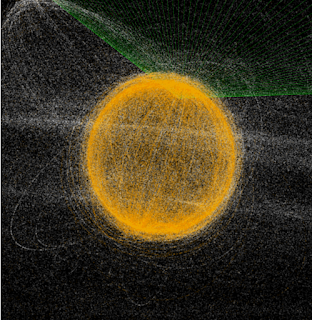ESA and EISCAT 3D Space Debris Simulation Hackathon
Video 1, Video 2, Video 3.
Our purpose was to integrate the Space Object Radar Tracking Simulator (SORTS) program to orbit determination software (SMART) developed in Braunschweig. Amongst other things, we worked on: data formats, Python-Fortran wrappers, propagator optimization and debugging, restructuring of code, initial orbit determination algorithm, and changes to the tracklet output directory structure. We made a lot of progress, and are now at a point where we can create hundreds of thousands of simulated EISCAT 3D tri-static radar tracks of objects and feed them into the orbit determination system. I even learned the basics of how to use git!
The week was spent writing software. I'd say that we averaged 12 hours per day. We made a lot of progress, and are now at a point where we can run through different radar usage scenarios.
On the last day, we made a little trip to the mountains, to counter all that sitting down.
Anyway, thanks for the highly productive visit!
Our purpose was to integrate the Space Object Radar Tracking Simulator (SORTS) program to orbit determination software (SMART) developed in Braunschweig. Amongst other things, we worked on: data formats, Python-Fortran wrappers, propagator optimization and debugging, restructuring of code, initial orbit determination algorithm, and changes to the tracklet output directory structure. We made a lot of progress, and are now at a point where we can create hundreds of thousands of simulated EISCAT 3D tri-static radar tracks of objects and feed them into the orbit determination system. I even learned the basics of how to use git!
 |
| Code being written. |
On the last day, we made a little trip to the mountains, to counter all that sitting down.







Comments
Post a Comment